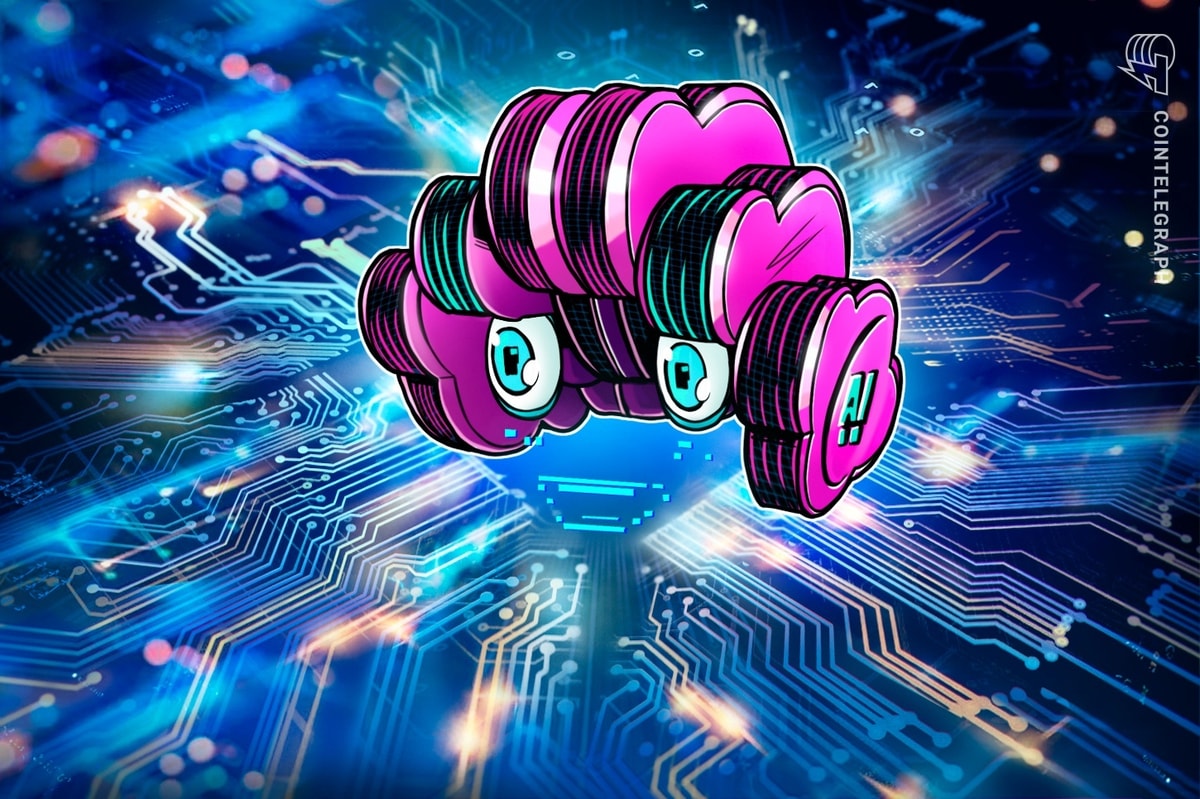The rise of AI-driven crypto agents is following a familiar trajectory that mirrors the initial boom, bust and resurgence of ICO-era projects. Just as
The rise of AI-driven crypto agents is following a familiar trajectory that mirrors the initial boom, bust and resurgence of ICO-era projects. Just as early blockchain ventures thrived on hype before maturing into sustainable ecosystems, the current wave of AI agent projects is undergoing rapid market shifts.
A new report by HTX Ventures and HTX Research says that investors are growing cautious as competition in the sector intensifies, liquidity disperses and many projects struggle to define clear use cases. Still, as the sector moves beyond its speculative phase, AI-driven crypto agents are expected to evolve sustainable business models underpinned by genuine utility.
To dive deeper into the evolution of crypto agents and the future of AI-driven blockchain innovation, download the full report by HTX here.
From meme hype to reality: The evolution of crypto agents
The initial wave of crypto agent projects in 2024 was driven by indiscriminate enthusiasm for AI projects. Following the impact of a $50,000 Bitcoin donation from Marc Andreessen in October 2024 and the success of token launchpads earlier in the year, many AI agent projects entered the space in Q1 of 2024 and rapidly diluted liquidity by Q1 of 2025. As with any emerging sector, early-stage hype did not always translate into long-term viability, and a cooling-off period in the crypto AI agent sector followed.
The market segment is now entering a more mature phase, and the focus is shifting from speculative excitement to revenue generation and product performance. The winners in this evolving landscape will be those that can generate stable revenue, cover the costs of running AI models and provide tangible value to users and investors alike.
AI agent applications emphasize real-world implementation and commercialization of this technology, particularly in areas like automated trading, asset management, market analysis and crosschain interaction. This approach aligns with multi-agent systems and DeFAI (decentralized finance + AI) initiatives like Hey Anon, GRIFFAIN and ChainGPT.
Recent research highlights the advantages of multi-agent systems (MAS) in portfolio management, particularly in cryptocurrency investments. Projects such as Griffain, NEUR, and BUZZ have already demonstrated how AI can help users interact with DeFi protocols and make informed decisions. Unlike single-agent AI models, multi-agent systems leverage collaboration among specialized agents to enhance market analysis and execution. These agents function in teams, such as data analysts, risk evaluators and trading execution units, each trained to handle specific tasks.
MAS frameworks also introduce inter-agent communication mechanisms, where agents within the same team refine predictions through collective learning, reducing errors in market trend analysis. The next phase of DeFAI will likely involve deeper integration of decentralized governance models, where multi-agent systems participate in protocol management, treasury optimization and onchain compliance enforcement.
To dive deeper into the evolution of crypto agents and the future of AI-driven blockchain innovation, download the full report by HTX here.
DeepSeek-R1: A breakthrough in AI agent training
A breakthrough in AI agent technology arrived with DeepSeek-R1, an innovation that challenges traditional AI training methods. Unlike previous models, which relied on supervised fine-tuning (SFT) followed by reinforcement learning (RL), DeepSeek-R1 takes a different approach, optimizing entirely through reinforcement learning without an initial supervised phase. This shift has led to remarkable improvements in reasoning capabilities and adaptability, paving the way for more sophisticated AI-driven crypto agents.
To understand this paradigm shift, consider two different approaches to learning. In the Traditional SFT and RL model, a student first studies from a workbook, practicing problems with set answers (SFT), and then receives tutoring to refine their understanding (RL). In contrast, with the DeepSeek-R1 Model (Pure Reinforcement Learning), the student is thrown directly into an exam and learns through trial and error. This approach allows the student to improve dynamically based on feedback rather than relying on pre-defined answers.
Leveraging DeepSeek-R1’s pure RL model, AI agents learn through trial and error in real-world conditions, dynamically adjusting their strategies based on immediate feedback.
This method allows for greater adaptability, making it particularly useful for multi-agent AI systems in DeFi, where real-time market fluctuations require agents to make autonomous, data-driven decisions. For example, AI-powered agents can monitor liquidity pools, detect arbitrage opportunities and optimize asset allocations based on real-time market conditions. These agents adapt quickly to market fluctuations, ensuring more efficient capital deployment.
Launched in late November 2024, iDEGEN is the first crypto AI agent built…
cointelegraph.com
